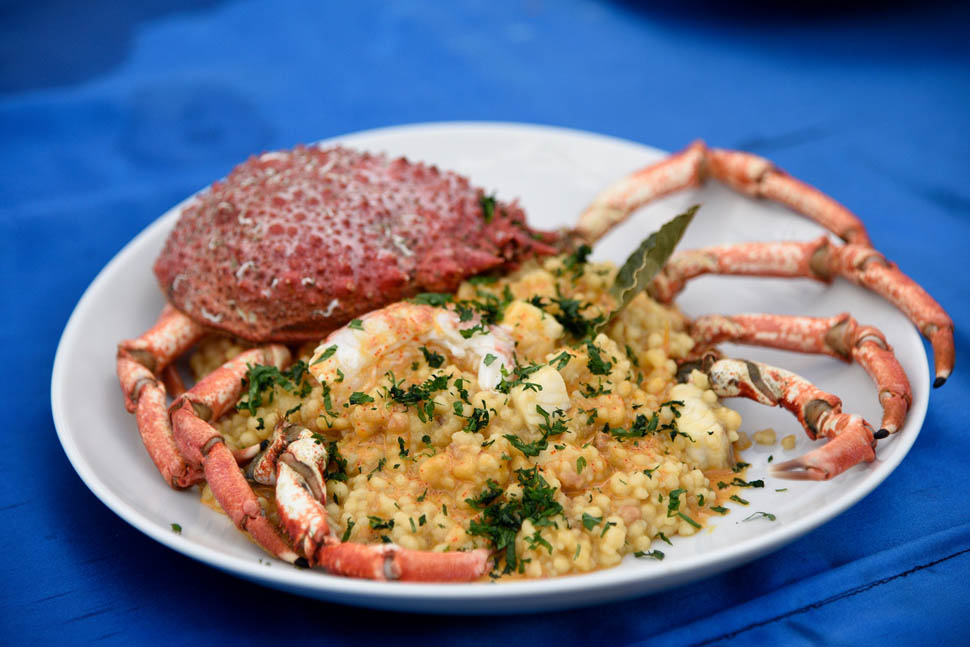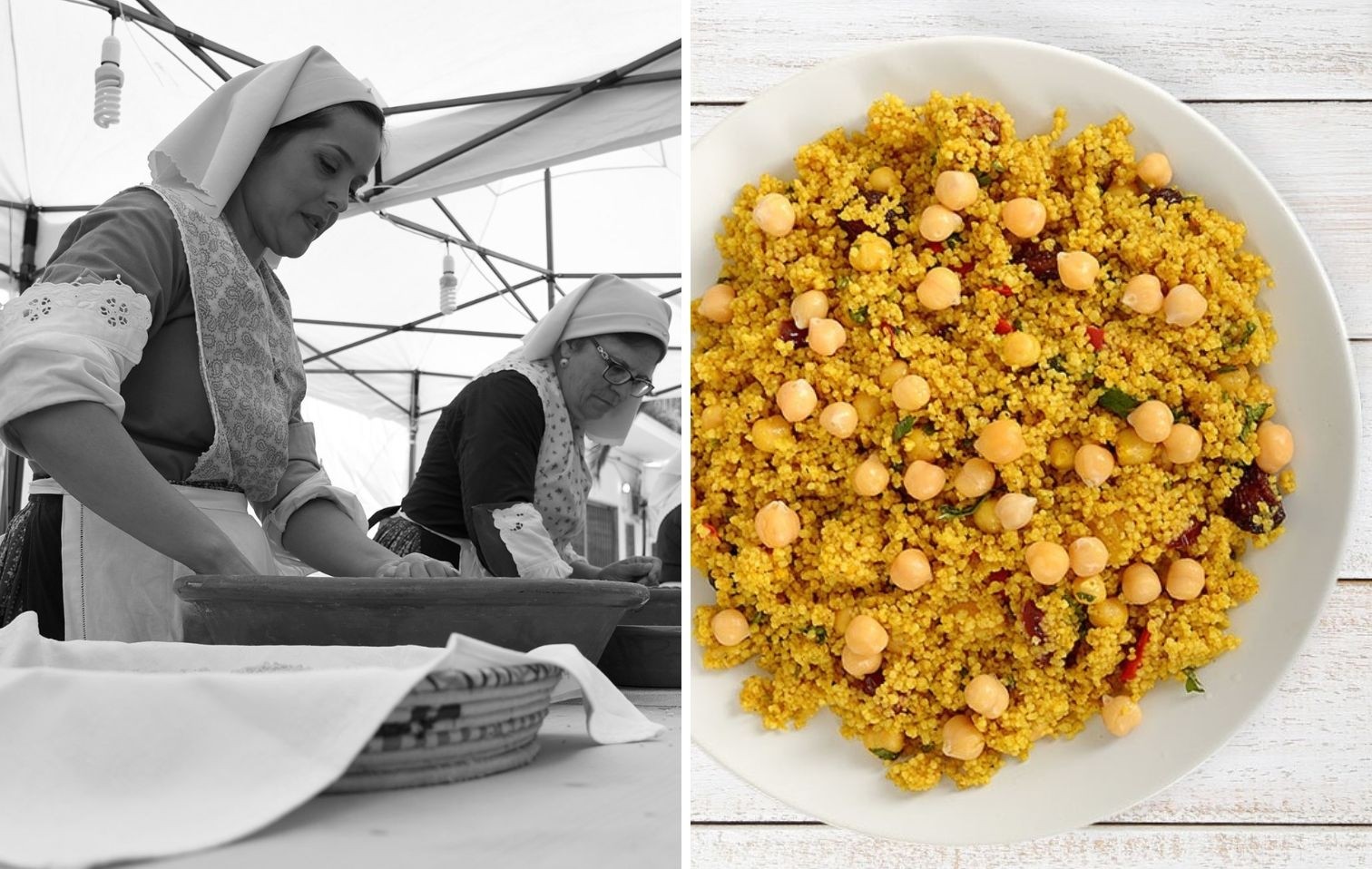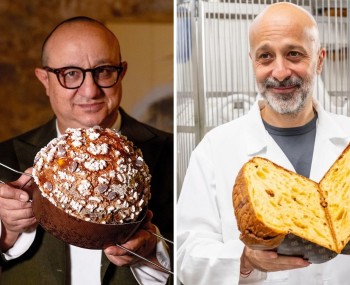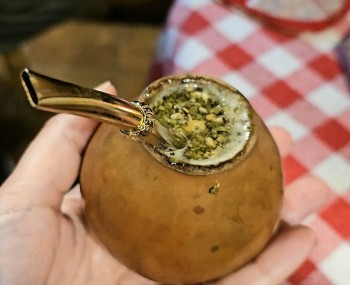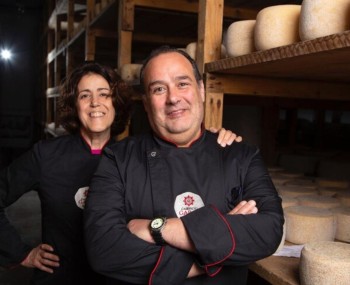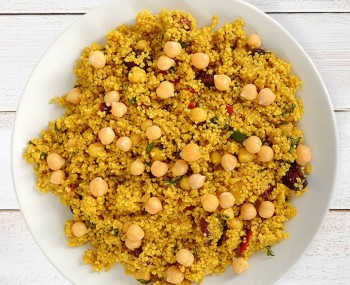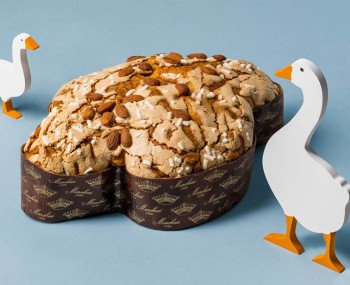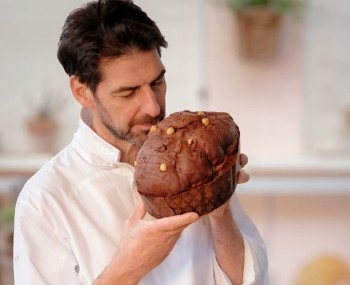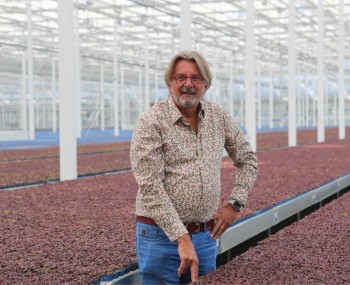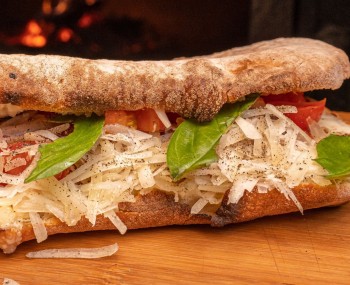Couscous has no single recipe or country of origin: it is a dish that mixes ingredients and ancient customs with the skill of those who still make it by hand. From the Cascà of Carloforte to the Pilau of Calasetta, authentic versions that defy time can be savored in Sardinian lands. History and secrets of preparation told by cultural anthropologist Alessandra Guigoni.
Cascà photo on the cover: @Sardinia Country
Cover portrait: Sagra del Pilau
The history of couscous between Tunisia, Liguria and Sardinia
Small balls of semolina, flavorful and with a texture that is delicious to the palate: this is couscous, a simple to make pasta, adaptable to a multitude of seasonings, which has therefore successfully found its way into many food cultures, including those of Europe, on the northern shore of the Mediterranean.

We are talking in particular about the gastronomic culture of Carloforte (as of today between 5,000 and 6,000 inhabitants) and Calasetta (3,000), two beautiful seaside towns on the Island of San Pietro and the Island of Sant'Antioco, respectively, in southwestern Sardinia. Here in Sulcis, these two small islands are a year-round tourist destination, thanks to their mild climate, gastronomic excellence and an extraordinary grape variety, Carignano, which often grows free-range and gives brilliant and intense red wines.
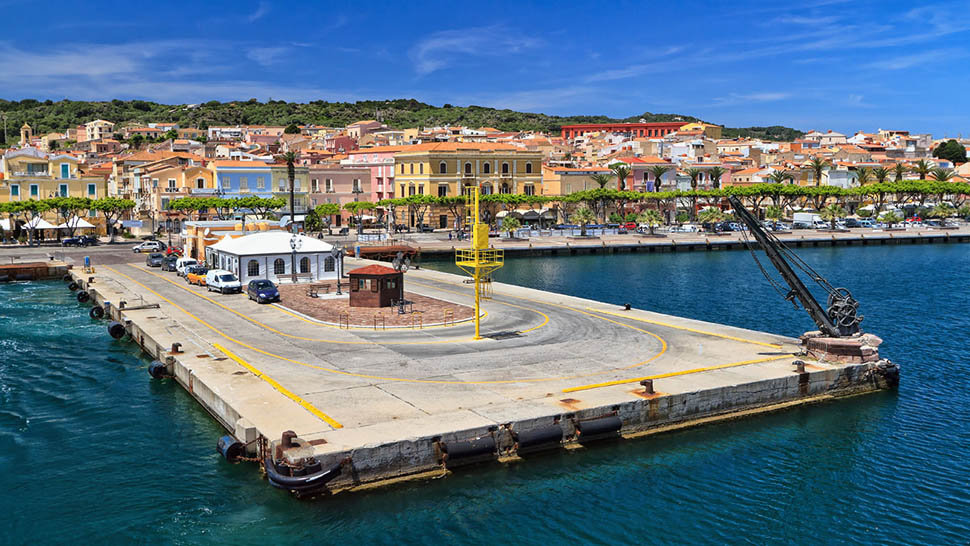
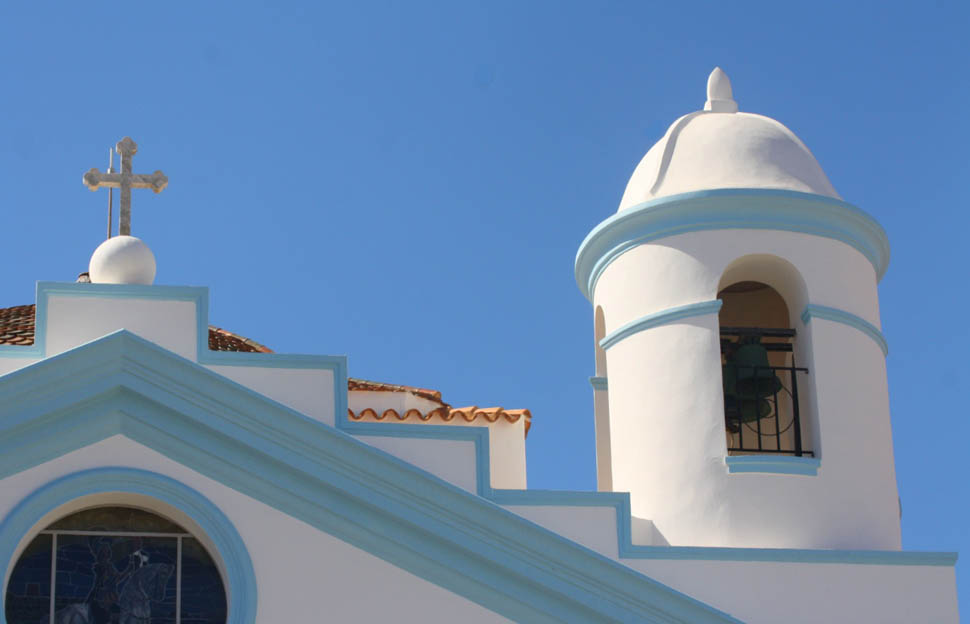
Carloforte and Calasetta were founded in the eighteenth century by Genoese exiles, or rather from Pegli, a district of Genoa, who came from Tabarka, a town in Tunisia. To make a long story short, they had settled there two centuries earlier, to trade and fish coral; by the eighteenth century relations with the Tunisians had deteriorated so they returned to the Kingdom of Sardinia, and settled in successive waves, founding first Carloforte (1738) on the desert island of San Pietro, and then Calasetta (1770) in Sant'Antioco. Since then these stubborn and resilient fishermen and farmers have never abandoned the Genoese language, their traditions and their cuisine, which is an interesting contamination of Genoese cuisine, Sardinian cuisine and precisely Tunisian cuisine.
The cascà carlofortino, a vegetable cous cous: what it looks like and how it is made
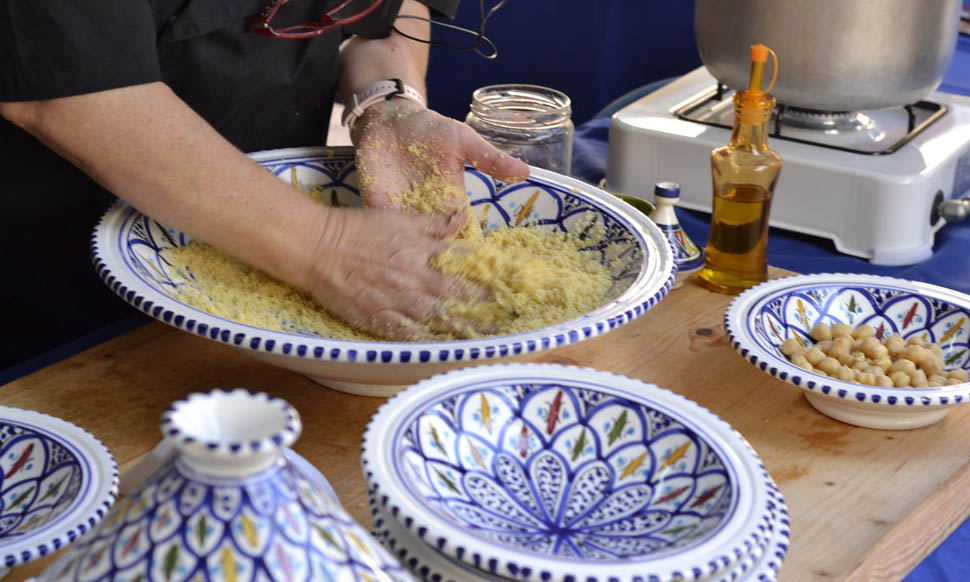
And this is where the cascà carlofortino precisely comes in, an identity dish that is celebrated every year with a fine gastronomic festival, which is the Arab couscous, interpreted according to the sensibility of this population of Ligurians transplanted to Sardinia. Carlofort people are said to be as good farmers as they are fishermen. Cascà, mentioned as early as a 1931 Italian Touring Club cookbook, is made with vegetables from the garden, following the seasons; in winter it is full of cabbage and leafy greens, in spring and summer it is colored with broad beans, peas, in summer with eggplant and peppers. It was a single, daily, nourishing dish with little expense since practically all Tabarchans have a garden in the village.
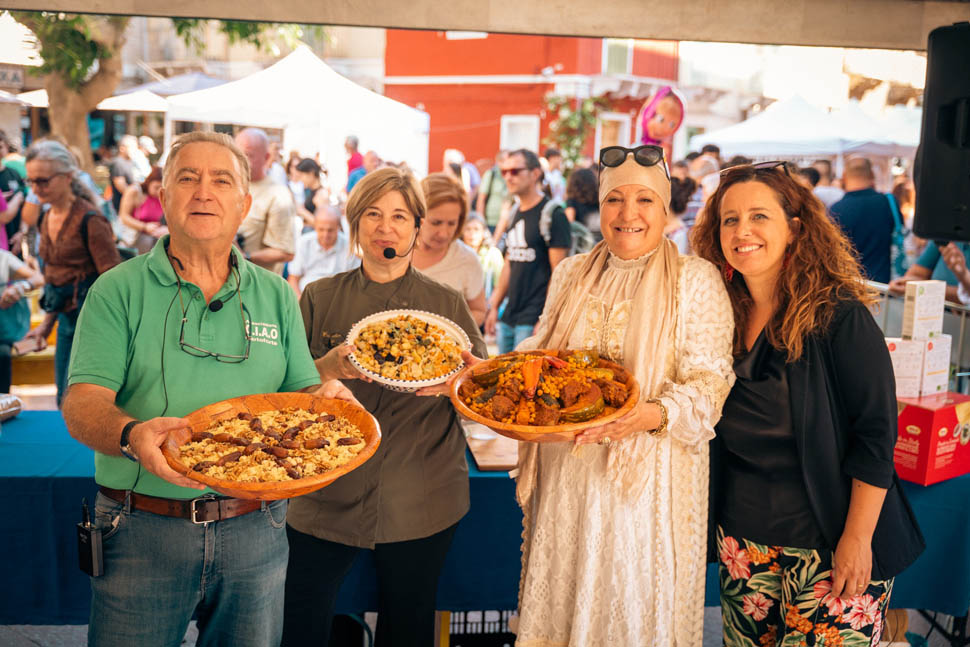
Some add chickpeas to it, others meat; there are as many variations as there are families in this seaside village, where even the children speak a kind of ancient Genoese, and know nursery rhymes and ditties now forgotten in the motherland. In nearby Calasetta, however, a cascà is made with fish and shellfish, called pilau (we tell you about it below), also celebrated in an annual festival that attracts thousands of visitors.

The preparation of the cascà consists of placing the semolina on a smooth surface (or a large earthenware bowl), pouring lukewarm water by sprinkling it and exerting a rotating action with the hand that causes the semolina to agglomerate into small balls, an action called “arundià” that is, rounding, giving the shape of the ball. After forming the cascà this is left to rest before being stewed and then seasoned with seasonal vegetables and legumes previously sautéed and then stewed with spices to taste.
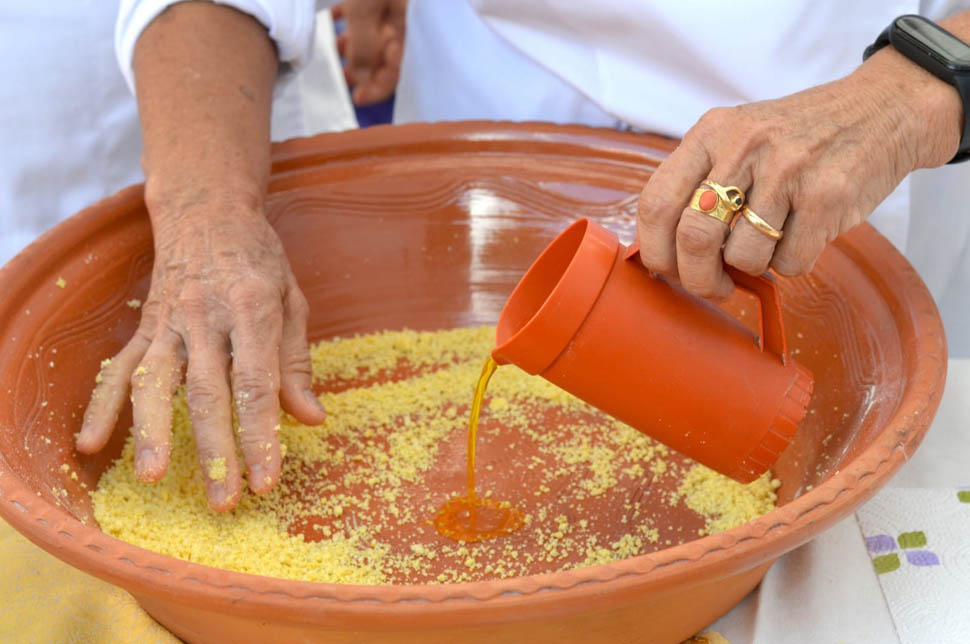
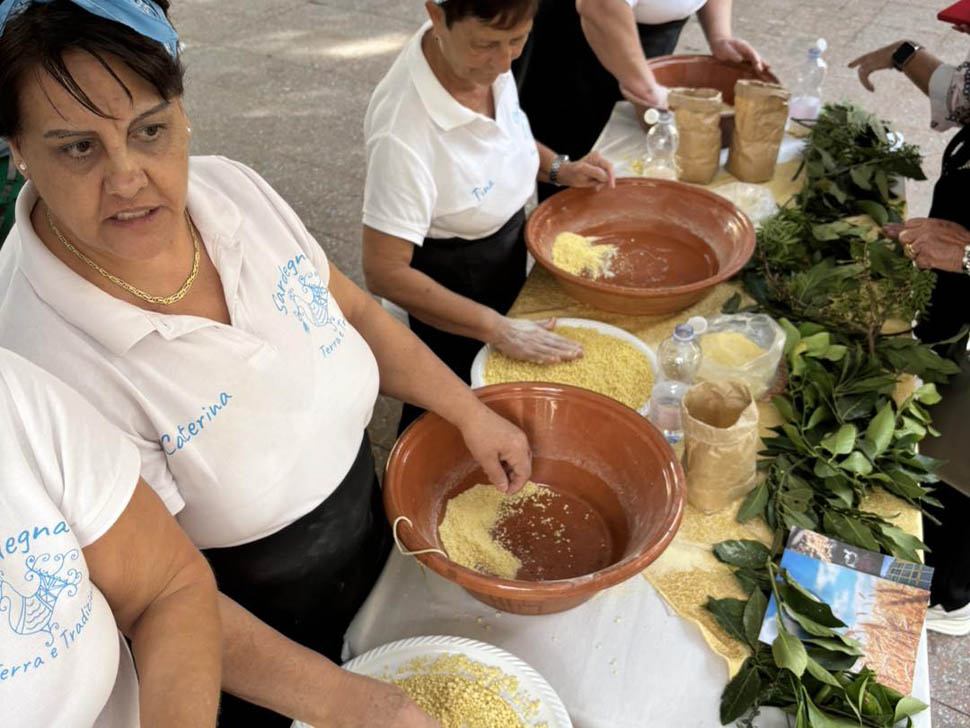
Pilau: Calasetta's cous cous with fish
Pilaf or pilau originally was an oriental rice-based preparation enriched with meat, fish or vegetables. Historical sources indicate that “pilaf” designates the cooking method rather than an ingredient, as the rice, after being browned briefly, absorbed all the cooking water. In the cuisine of Calasetta, a delightful village whose houses are painted white and blue, it denotes a preparation of couscous (called scucuzù) with a tasty red sauce with shellfish and/or fish.
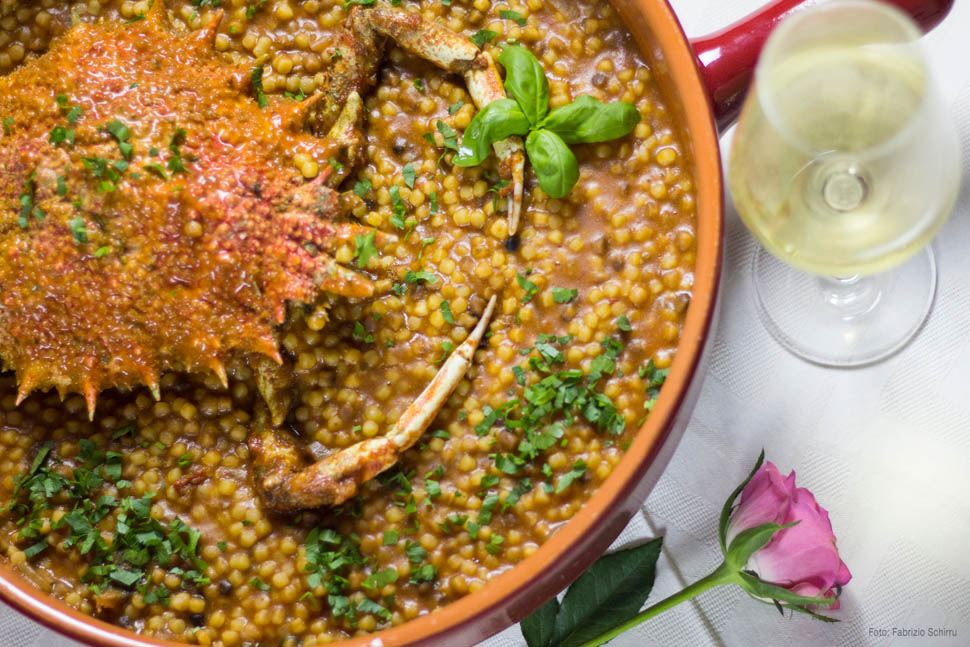
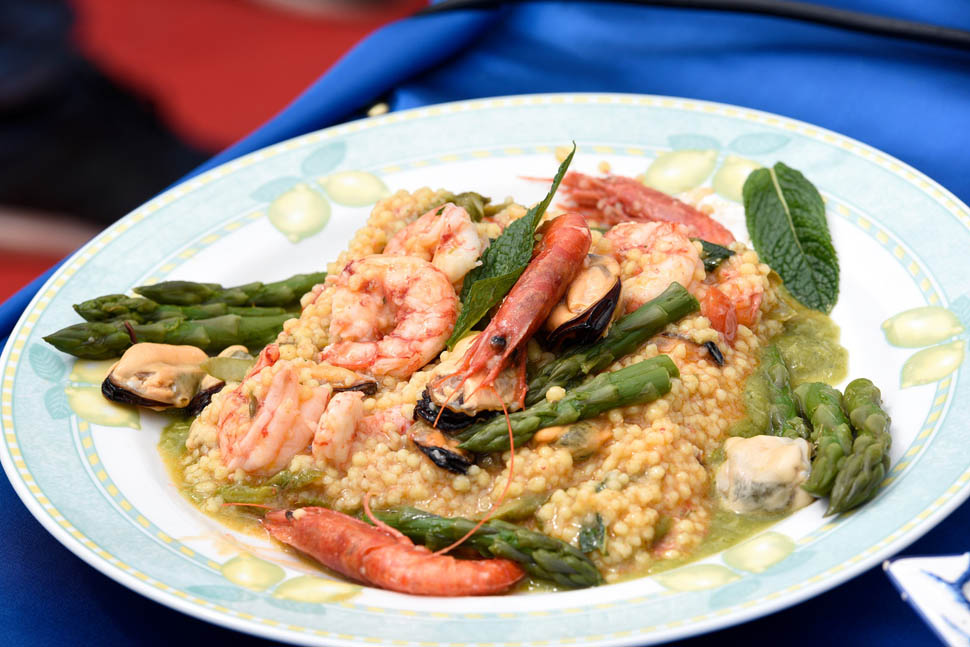
The housewives recommended, after sautéing garlic and onion and fresh tomatoes (or peeled or pureed tomatoes), to add other crustaceans or small fish as an alternative to the spider crab and cichalas, depending on what was available at the fishmonger's counter. Originally, pilau, like cascà, was also a poor man's dish, a way to consume without waste what the fishermen of Calasetta brought home. "Circular cuisine ” ante litteram, when ecology and sustainability were a necessity to make ends meet.
